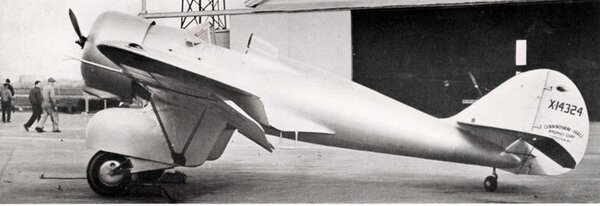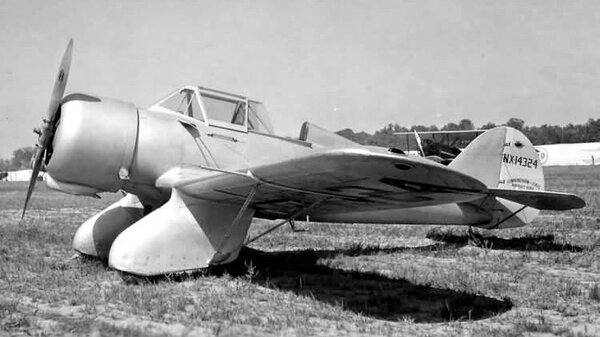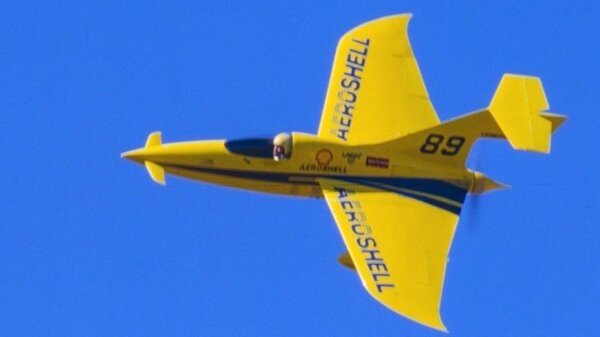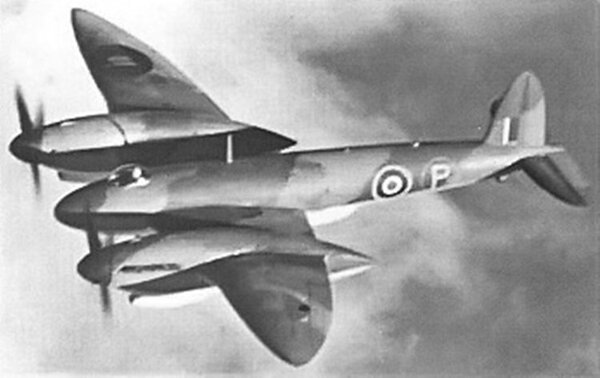-
Posts
7,716 -
Joined
-
Last visited
-
Days Won
67
Content Type
Profiles
Forums
Gallery
Downloads
Blogs
Events
Store
Aircraft
Resources
Tutorials
Articles
Classifieds
Movies
Books
Community Map
Quizzes
Videos Directory
Posts posted by red750
-
-
The Epic Victory was the second experimental jet designed by Epic Aircraft, a company that was based in Bend, Oregon. Epic Aircraft declared bankruptcy in 2009. Its assets were acquired by Aviation Industry Corporation of China and LT Builders Group; which as of July 2010 were in the process of restarting production of the Victory.
The Victory is a single-engine very light jet that was intended to be powered by a single Pratt & Whitney Canada PW600. Epic used the Williams FJ33 engine for testing but planned to switch to the PW600 for final production.
The aircraft seats 4 to 5, including the pilots, in a 2+2 or a 2+1+2 configuration. The aircraft took Epic six and a half months to design from concept to a flying prototype, with the first flight on 6 July 2007 from Roberts Field in Redmond, Oregon.
The company had intended that the jet would be available for less than US$1 million. The aircraft was displayed at the Experimental Aircraft Association's AirVenture fly-in in 2007 at Oshkosh, Wisconsin, where the company began accepting down payments.
The prototype's Federal Aviation Administration registration expired on 31 May 2017. It has not been renewed and the aircraft has been deregistered.
-
The Martin XB-51 was an American trijet ground-attack aircraft. It was designed in 1945 and made its maiden flight in 1949. It was originally designed as a bomber for the United States Army Air Forces under specification V-8237-1 and was designated XA-45. The "A" ground-attack classification was eliminated the next year, and the XB-51 designation was assigned instead. The requirement was for low-level bombing and close support. The XB-51 lost out in evaluation to the English Electric Canberra which — built by Martin — entered service as the Martin B-57 Canberra.
This unorthodox design, first flying on 28 October 1949, was fitted with three General Electric J47 engines - an unusual number for a combat aircraft - two underneath the forward fuselage in pods, and one at the extreme tail with the intake at the base of the tailfin. The innovative, variable incidence wings, swept at 35° and with 6° anhedral, were equipped with leading edge slats and full-width flaps. Spoilers gave most of the roll control and undersized ailerons provided feel for the pilot. The combination of variable incidence and slotted flaps gave a shorter takeoff run. Four 954 lb (4.24 kN) thrust Rocket-Assisted Take Off (RATO) bottles with a 14-second burn duration could be fitted to the rear fuselage to improve takeoff performance. Spectacular launches were a feature of later test flights.
The main landing gear consisted of dual wheel sets in tandem in the fuselage, similar to the Boeing B-47 Stratojet, with outrigger wheels at the wingtips (originally proved on a modified Martin B-26 Marauder named "Middle River Stump Jumper"). The XB-51 was a large but aerodynamically "clean" design which incorporated nearly all major systems internally. The aircraft was fitted with a rotating bomb bay, a Martin trademark; bombs could also be carried externally up to a maximum load of 10,400 lb (4,700 kg), although the specified basic mission required only a 4,000 lb (1,814 kg) bombload. Eight 20 mm cannon mounted in the nose would have been installed in production aircraft.
Crew was a pilot under a "fighter"-type bubble canopy and a Short-range navigation and bombing system (SHORAN) operator/navigator in a compartment located lower than and to the rear of the cockpit (only a small observation window was provided). Both crew members were provided with a pressurized, air conditioned environment, equipped with upward-firing ejection seats. The XB-51 was the first Martin aircraft equipped with ejection seats, these being of their own design.Number built - 2.
-
The Cunningham-Hall GA-21 was an American two-seat monoplane design to compete for the Guggenheim Safe Aircraft Competition in 1934. Its distinguishing feature was full span flaps which could be manually or automatically adjusted. The GA-36 was a military version of it with tandem, rather than side-by-side seating.
The GA-21M was all metal aircraft apart from the fabric covering of parts of the wing, otherwise metal-covered, and the control surfaces. The low-set wings were rectangular in plan out to rounded tips and had a high lift section. Both flaps and ailerons filled the whole straight part of the trailing edge, so the latter only opened upwards.
Apart from its unusual flaps and lateral control the GA-21M was conventional. Powered by a 145 hp (108 kW), seven cylinder Warner Super Scarab radial engine, it had a round-sectioned, metal-skinned, monocoque fuselage. An open cockpit over the forward wing seated two side-by-side. The tailplane was mounted just above the fuselage on the fin and could be trimmed; essentially triangular in plan, it carried rounded elevators. A rounded rudder reached down to the keel.
The GA-21Ms had conventional, tailwheel landing gear with the landing wheels ahead of the leading edge within aircraft fairings that also enclosed the legs.
The GA-36 was a 1936 military trainer rebuild of the Ga-21M. This included a revised, tandem cockpit and more trouser-like landing gear fairings, making it 15% heavier.
The automated flaps worked well but were more complicated than, for example, Fowler flaps and more expensive to construct. Simpler systems were preferred and the sole GA-21M/36 was sold in 1941, stripped of major components and dumped until the 1980s when it was recovered, fully restored and put on display at the Niagara Aerospace Museum.
GA-21M
GA-36
-
The Cunningham-Hall Model PT-6 was an American six-seat cabin biplane aircraft of the late 1920s and was the first design of the Cunningham-Hall Aircraft Corporation of Rochester, New York.
The Cunningham-Hall Aircraft Corporation was formed in 1928 and the first design was the PT-6 (Personal Transport 6-place), which first flew on April 3, 1929.[3] It was flown to the Detroit Aircraft Show two days later, with minor alterations being made later including a switch from a tailskid to a tailwheel.
The PT-6 was a cabin biplane with an all-metal structure that was stressed to meet military strength specifications rather than the much more lenient commercial requirements, however aside from the cabin, which was covered with corrugated aluminum, most of the airframe was fabric covered. It had a fixed landing gear with a tail wheel. The cockpit held a pilot and either a copilot or passenger, with a separate cabin for four passengers. The aircraft was powered by a 300 hp (220 kW) Wright J-6-9 Whirlwind radial engine.
The company's final aircraft was a freighter conversion the PT-6F. Built during 1937 and flown in 1938, the passenger cabin was modified as a cargo compartment with 156 cu ft (4.4 m3) of stowage space, an NACA cowling was fitted, along with a variable-pitch propeller. A freight door was fitted to the fuselage and a loading hatch fitted in the roof. It was powered by a Wright R-975E-1 radial engine of slightly greater power.
Only two PT-6s (s/n 2961 X461E and s/n 2962 NC692W) and one PT-6F (s/n 381 NC16967/NPC44/NC444) were registered, however as many as six of each type may have been built. The discrepancy from many publications with higher numbers may indicate that from two to nine additional airframes were built, but scrapped without being registered or sold, due to the collapse of the aviation market with the deepening of the Great Depression. A production line had been set up, and materials bought to produce 25 examples.
Plans for a slightly smaller 4-seat derivative to be named the PT-4, and an armed military variant were also cancelled.
One example was used for charter flying by the Rochester - Buffalo Flying Service, often fitted with skis or floats. One customer was the Fairchild Aviation Corporation. George Eastman of Kodak had his first flight in PT-6 The PT-6F was supposed to have been one of three built from parts still available from the original cancelled production run, for an expected Philippine customer, and even carried the Philippine registration of NPC-44, however a lack of funds caused that sale to be cancelled. The aircraft was eventually sold for around $7,000, and made its way to Alaska for a career as a bush plane with Byers Airways.
-
 2
2
-
-
The pilot of the Black Hawk helicopter that collided with the American Airlines passenger airplane did not comply with directions to change course seconds before the fatal incident, a bombshell new report has revealed.
On the night of January 29, Army Black Hawk pilot Capt. Rebecca Lobach was conducting an annual flight evaluation with her co-pilot Chief Warrant Officer 2 Andrew Loyd Eaves, who was serving as her flight instructor.
Three months on, new details published by The New York Times revealed that the pilot made more than one mistake leading to one of the worst catastrophes in aviation history.
Not only was Lobach flying her Black Hawk too high, but in the final moments before the impact, she failed to take advice and instruction from her co-pilot to switch course.
Lobach's piloting skills were being tested during the evaluation on the fateful night, before the crew were informed that an aircraft was nearby, according to the report.
Just 15 seconds before colliding with the commercial airplane, air traffic control told Lobach and Eaves to turn left, but she did not do so.
Seconds before impact, co-pilot Eaves then turned to Lobach in the cockpit and told her that air traffic control wanted her to turn left. She still did not do so.
Investigators may never know why Lobach did not change course that day.
Both Lobach and Eaves had first acknowledged the message that an aircraft was nearby, and spotted the plane themselves before requesting to fly by 'visual separation.'
This is a practice that allows aircraft to avoid collisions based on their own observations instead of following the air traffic controller's instructions.
'The request to fly under those rules is granted routinely in airspace overseen by controllers. Most of the time, visual separation is executed without note.
'But when mishandled, it can also create a deadly risk — one that aviation experts have warned about for years,' aviation experts told the outlet.
The report stated: 'The Black Hawk was 15 seconds away from crossing paths with the jet. Warrant Officer Eaves then turned his attention to Captain Lobach. He told her he believed that air traffic control wanted them to turn left, toward the east river bank.'
If she had turned left, it 'would have opened up more space between the helicopter and Flight 5342,' it added.
Instead, 67 people - everyone aboard the plane and helicopter - perished.
Lobach, from Durham, North Carolina, was an aviation officer in the Army and had racked up around 500 hours of flying time.
She also served as a White House military social aide during the Biden administration.
A critical rule in the industry is that if two aircraft are on a collision course pilots have to be advised if they are likely to merge, according to Federal Aviation Administration (FAA) regulations.
Experts found that did not happen that night and that 'immediate intervention was needed' to prevent the horrible tragedy that left 67 dead.
'Direct, immediate intervention was needed that night. Instead of seeing and avoiding Flight 5342, Captain Lobach continued flying straight at it,' the report read.
Though it remains unclear why Lobach defied orders, Aviation experts predict she may have been 'blindsided' that the American Airlines flight was 'circling' Runway 33 that night.
Investigators now believe the Black Hawk crew did not hear the word 'circling' because they might have been pressing the microphone key to talk at the same time the crucial term came through, according to the report.
'If the key is depressed, the pilot can speak but not hear incoming communications,' it detailed.
There is also no indication that Lobach suffered a medical emergency at the time of the crash, and didn't have pre existing health issues, her loved ones and people close to the investigation told the outlet.
-
 1
1
-
-
Found another website in Italian which when translated, gives this engine detail -
2 x 250 AG (184 kW) power 6-cylinder oposic internal combustion engines L-O-540
-
 1
1
-
-
4 minutes ago, Marty_d said:
How come "ENGINE" says "1 x M14-PS" when it seems to have one on each wing?
Ask the secret projects forum.
-
Lithuanian Vladas Kensgaila began work on the prototype Kensgaila VK-9 in 1994. Compared to contemporary aircraft like the Tu-24, it looked very modern with a streamlined fuselage, winglets and a retractable tricycle landing gear. Much of the aeroplanes structure was made of class fibre plastic composite material. It was a low wing monoplane and was built at the Kensgaila Aircraft Plant (factory?) at the former Lithuanian Air National Guard field at Stetiskiai near Paneveyzs. Only one unit produced.
ENGINE: 1 x M-14PS (360 hp)
WING SPAN: 14.0 m
LENGTH: 10.24 m
HEIGHT: 3.94 m
WING AREA: 26 sq m
EMPTY WEIGHT: 1,200 kgs
MAXIMUM TAKE OFF WEIGHT: 2,400 kgs
ACCOMODATION: 6 passengersCRUISING SPEED: 350 km/ph
RANGE: 2,000 kms with 45 minutes reserve
TAKE-OFF RUN: 200 m
LANDING RUN: 250 m
FIRST FLIGHT: 1996
PRODUCTION: 1
G-LIMITS: +5 / -2.5These details were the only ones I could locate, and came from Secret Projects forum. No Wikipedia page.
-
The Bell 533 was a research helicopter built by Bell Helicopter under contract with the United States Army during the 1960s, to explore the limits and conditions experienced by helicopter rotors at high airspeeds. The helicopter was a YH-40—a preproduction version of the UH-1 Iroquois—modified and tested in several helicopter and compound helicopter configurations. The Bell 533 was referred to as the High Performance Helicopter (HPH) by the Army, and reached a top speed of 274.6 knots (508.6 km/h; 316.0 mph) in 1969, before being retired.
The U.S. Army began a program to study improvements to current helicopters that could be demonstrated by testing. Analyses by three helicopter companies showed that performance could be greatly improved. Bell Helicopter was one of the participants and investigated improvements to the UH-1B Iroquois. After the study, Bell submitted a proposal for the High Performance Helicopter. On 7 August 1961, the Army's Transportation Research and Engineering Command (TRECOM) awarded a contract to Bell Helicopter for a high-performance helicopter to conduct research.
In response, Bell built the Model 533 from a YH-40-BF, one of the six preproduction UH-1s. The dynamic components of the YH-40 were updated with components designed for the UH-1B. The research for the contract was split into two phases; phase one would be to determine the benefits of an overall reduction in drag, phase two would determine the benefits of auxiliary thrust.
The Bell 533 was flight tested in three main configurations. The first configuration was the basic YH-40 helicopter with drag reduction changes. The second configuration added a pair of jet engines for additional thrust. The third configuration added swept wings for extra lift.
Second configuration.
Third configuration.
-
 1
1
-
-
The Martin XB-48 was an American medium jet bomber developed in the mid-1940s. It competed with the Boeing B-47 Stratojet, which proved to be a superior design, and was largely considered as a backup plan in case the B-47 ran into development problems. It never saw production or active duty, and only two prototypes, serial numbers 45-59585 and 45-59586, were built.
In 1944, the U.S. War Department was aware of aviation advances in Germany and issued a requirement for a range of designs for medium bombers weighing from 80,000 pounds (36,000 kg) to more than 200,000 pounds (91,000 kg). Other designs resulting from this competition, sometimes nicknamed "The Class of '45", included the North American XB-45 and the Convair XB-46. Production orders finally went to the North American B-45 Tornado, and even this airplane served only for a couple of years before again being replaced by the much more modern Boeing B-47 Stratojet, although the B-45 had the inherent performance – especially if it was not burdened with a payload – for it to then serve as a reconnaissance aircraft.
All of the bombers comprising the Class of '45 were transitional aircraft, which combined the power of turbojets with the aeronautical knowledge of World War II.[citation needed] The XB-48 was no exception, as its round fuselage and unswept wings showed a distinct influence of Martin's B-26 Marauder medium bomber. Still, where the B-26 had enough thrust with two massive 18-cylinder radial engines, the XB-48 needed no less than six of the new jet engines.
At the time of the XB-48's design, jet propulsion was still in its infancy. And, although it appeared superficially to have six separate engine nacelles – that is, three under each wing – the XB-48 actually had only two, unusually wide, three-engined nacelles. Each of these large nacelles also contained an intricate set of air ducts that constituted the engines' cooling system.
The XB-48 was the first aircraft designed with bicycle-type tandem landing gear, which had previously been tested on a modified B-26. The wing airfoil was too thin to house conventional landing gear mechanisms. The main landing gear was in the fuselage and small outriggers located on each wing were used to balance the aircraft.
The XB-48 made its first flight on 22 June 1947, a 37-minute, 73 mi (117 km) hop from Martin's Baltimore, Maryland plant to NAS Patuxent River, Maryland, but blew all four tires on its fore-and-aft mounted undercarriage on landing when pilot Pat Tibbs applied heavy pressure to the specially-designed, but very slow to respond, insensitive air-braking lever. Tibbs and co-pilot Dutch Gelvin were uninjured.
-
Thanks for clarifying, Arron25. I stand corrected.
-
The Ikarus 452M (B-452-2) was a Yugoslav experimental aircraft first revealed in 1953. It was Yugoslavia’s first swept-wing light jet fighter-interceptor. The all-metal aircraft featured retractable nose-wheel landing gear and was the first to incorporate a domestically produced light metal alloy for its fuselage skin.
A distinctive aspect of the design was its twin-fin tail unit, an uncommon feature in Yugoslav aviation. The fins were mounted on beams extending from the wings and connected by a V-shaped stabilizer. The aircraft had a 36º wing sweep, with plans to add slats for improved performance. It was powered by two Palas 056A turbojet engines arranged vertically in the fuselage, each fed by separate air intakes. As a technology demonstrator, its armament was minimal, consisting of two 12.7mm Browning machine guns.
It was publicly revealed on April 30, 1953. However, a test flight on July 24 ended in an emergency landing due to fuel system failure, severely damaging the aircraft and injuring the test pilot.
To address inadequate engine thrust, a three-engine variant (B-452-3) was proposed, with upgraded armament, but it remained at the design stage. A later iteration, the B-452-4, incorporated a more powerful Turbomeca Marbore II engine, an enlarged airframe, and twin 20mm cannons. Intended for both interception and ground attack, it was designed to carry air-to-surface high-velocity aircraft rockets (HVARs). Despite its modern concept, the project was ultimately shelved in favor of the B-12 interceptor.
Results of the experimental programme provided a basis for the production of the Soko Galeb. Only two prototypes built.
-
 1
1
-
 1
1
-
-
-
The Miller-Bohannon JM-2 Special, named Pushy Galore, is a one-of-a-kind American homebuilt Formula One racing and record-setting aircraft. It was based upon Jim W Miller's Miller JM-2 design, highly modified by Bruce Bohannon.
Bohannon began construction of Pushy Galore in 1988 and first flew it in the early part of 1989, first entering it in a race in June 1989.
The aircraft is of three-surface configuration, having a cantilever mid-wing, a single-seat enclosed cockpit under a bubble canopy, fixed main tricycle landing gear with a retractable nose wheel, a t-tail and a nose-mounted canard. It is powered by a single rear-mounted engine in pusher configuration.
The aircraft is made from welded steel tubing covered in molded carbon fiber. As required by the Formula One rules, its engine is a 100 hp (75 kW) Continental O-200A.
Only one example was ever built.

-
 1
1
-
 1
1
-
-
The Reid and Sigrist R.S.3 Desford is a British twin-engined, propellor-driven, three-seat advanced trainer aircraft developed in the Second World War for postwar use. Although the R.S.3 was evaluated as a trainer, the type never entered production and was eventually rebuilt as the R.S.4 Bobsleigh as an experimental aircraft with the pilot in a prone position, seen as advantageous in minimising g-force effects in fighter aircraft.
Reid and Sigrist in Desford, Leicestershire, England, were an important instrument manufacturer in the interwar era, specialising in aircraft applications leading to the forming of an aviation division in 1937 at the New Malden, Surrey factory site. The first product was a twin-engined advanced trainer, the R.S.1 Snargasher (1939) which was eventually relegated to company hack used primarily at the factory and Desford aerodrome.
The follow-up design, the R.S.3 Desford (taking its name from the company site) was similar in size and concept to its predecessor although it was only configured for a pilot and trainee and featured a low-set wing. The R.S.3 was powered by two 130 hp de Havilland Gipsy Major Series I engines, rather than the higher powered de Havilland Gipsy Six engines of the earlier R.S.1.
The prototype, registered as G-AGOS first flew on 9 July 1945, shortly before VJ Day. Evaluated as a private venture project by test pilots including famed postwar flyer, Janusz Żurakowski at the Aeroplane and Armament Experimental Establishment (A&AEE) at RAF Boscombe Down, the R.S.3 was generally found to be well suited as a multi-engine primary and intermediate trainer. However, RAF interest was lukewarm due to the glut of surplus wartime training aircraft available. The prototype appeared at the Farnborough Airshow in 1946, and was allocated to the Institute of Aviation Medicine but by May 1949, it was deregistered as a civilian aircraft, flying subsequently with RAF serial number VZ728.
Further development of the type continued as the company wanted to establish itself as an aviation engineering and production concern although its postwar work primarily centred on instrument and camera production, especially in creating a copy of the German Leica.
When Royal Air Force high-speed research explored high g-forces encountered in manoeuvres, a number of prone-pilot experimental aircraft including the Gloster Meteor F8 "Prone Pilot" were produced. To investigate low-speed applications, the R.S.4 Bobsleigh was a radical conversion of the R.S.3 reconfigured into a single pilot operation with a prone pilot station in the new rounded nose. This section was equipped with a transparent cone which covered a large section of the nose and two separate transparent ports to give minimal sideways and rearwards views. The R.S.4 was first flown in this form on 13 June 1951. Although useful data was obtained, the R.S.4's prone pilot did have difficulty with the initial control setup. Today's hang glider pilots have found the prone position an ideal means of controlling flight as well as providing a streamlined profile.
Experimental testing was conducted by the Royal Aircraft Establishment (RAE) at Farnborough and continued until January 1956 when the R.S.4 returned to the UK civil registry, again as G-AGOS. It was used at one time as an air photo aircraft by Film Aviation Services and remained in flyable condition until 1973. After a period at the Snibston Discovery Park, the R.S.4 was moved to Spanhoe, Northamptonshire for restoration by Windmill Aviation. The restored Desford flew again on 22 April 2018, but the aircraft's owners, Leicestershire County Council, did not publicly display the Desford. The Desford was delivered to the Newark Air Museum on 19 August 2022.
R.S.3 Desford
R.S.4 Bobsleigh
-
 2
2
-
-
The FAA has announced that the company operating these tours has now ceased operation. Their safety history is still being investigated.
-
Jeez you know how to kill a joke.
-
-
OK, but when referring to something 8 posts back, it helps to use the "Quote" facility to create relevance. Threads have a tendency to drift.
-
The Vickers Type 432 was a British high-altitude fighter aircraft developed by the Vickers group during the Second World War. Intended to enable the Royal Air Force to engage the enemy's high-altitude bomber aircraft, it was to be armed with six cannon.
The origins of the Type 432 lay with a requirements set out in 1939 for twin-engined fighters with 20 or possibly 40 mm cannon. Vickers had set out a proposal for a Griffon-engined aircraft, equipped with a 40 mm cannon in a flexible mounting. This was subsequently encouraged by the Air Ministry. Further development was carried out for a design that could also meet F.6/39 for a fixed gun fighter with 20mm cannon. Specification F.22/39 was drawn up to cover the 40 mm project as the Vickers 414 to meet Operational Requirement (OR) 76. This was subsequently revised with aircraft redesigns to become specifications F.16/40 and then F.7/41 for OR. 108.
In appearance it resembled a larger version of the de Havilland Mosquito and was known to some as the "Tin Mosquito". The pilot had a pressurised cockpit in the nose, with a bubble dome, similar to an enlarged astrodome. The pressurised cockpit took up the nose section so the cannon would have been fitted in a fairing below the fuselage, to the rear of the aircraft.
The aircraft's elliptical wing was built using a unique stressed-skin structure, designed by Barnes Wallis for lightness. The top and bottom were manufactured separately, and then clamped together at the leading and trailing edges, this being named "peapod" or "lobster-claw" structure. This allowed a large internal space unobstructed by ribs, hence capable of housing large fuel tanks (similar to Wallis's geodetic designs).
The first prototype Type 432 DZ217 was flown on 24 December 1942. Initial trials revealed serious handling difficulties on the ground, the aircraft snaking while taxiing, necessitating aft movement of the mainwheels to correct the bad tracking. In flight tests, the Type 432 was unable to be landed in a standard "three-point" stance resulting in the replacement of the Irving-type ailerons with new Westland types along with an alteration of tail settings. The estimated maximum speed of 435 mph (700 km/h) at 28,000 ft (8,535 m) was never attained as the Merlin 61 engines did not run satisfactorily above 23,000 ft (7,010 m).
When the competing Westland Welkin was ordered into production, the second prototype of the Vickers fighter, the Type 446, was cancelled, before completion, on 1 May 1943. The first prototype was retained by Vickers for test purposes until the end of 1944, when the aircraft was scrapped after completing only 28 flights.
-
 2
2
-
-
And that relates to parking at Tullamarine? How?
-
 1
1
-
-
Airport parking stations (Wilson Parking) is a licence to print money, Many floors of parking, you get giddy going around the entry/exit ramps, and run up a couple of K's looking for a parking space. All at an exorbitant rate per minute.
-
 1
1
-
 1
1
-
-
My son got back from his trip to Phuket this morning. I got there about the same time as his plane landed. Allowing for him to go through customs, I was in the carpark at the airport for about an hour. The parking fee - $`17.00
-
 1
1
-
-
A gyrocopter pilot has been injured in a fiery crash-landing on the World Heritage-listed K’Gari (Fraser Island) in Queensland.
Witnesses were close by and watching the low-flying aircraft moments before the crash just after midday on Friday.
It happened near the Moon Point camping ground, 360km north of Brisbane, with the impact throwing the pilot from the aircraft.
The pilot, a man aged in his 50s, injured his hip, head and arm.
He is in a stable condition after being flown by rescue helicopter to Brisbane.
“(The aircraft) hit the deck maybe 50 metres from us, bounced, and then stopped another five metres, and then flames just erupted,” witness Mark Davies, from Karma Dives, told 7NEWS.
“As soon as I saw it, I knew it wasn’t going to end good so I just sprinted down to it.”
-
 2
2
-
 1
1
-






















Baby planes
in Aviation Laughter
Posted
Maybe planedriver can reload the original image. I can't remember it but from my previous post it must have had a a humourous twist.
As for Facebook, I find it provides a lot of information. Yes, there's also a lot of crap, but you can scroll past that. Most of the aircraft in the Oddball thread (290 0f them) are brought to my attention by FB, then I look them up of Wikipedia. Most of the reports about Trump come from FB. Nearly all my silly pictures and silly signs come from FB. Reports of deceased celebrities are from FB, and lots of quickie jokes come from FB. And they have lots of general knowledge quizzes and mathematics questions to keep my brain active. And that doesn't take into consideration keeping in touch with family and friends. Don't use Twitter (X), Truth Social, Instagram, Tik Tok or any other soshul meja.